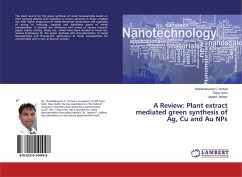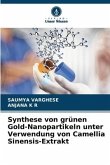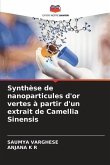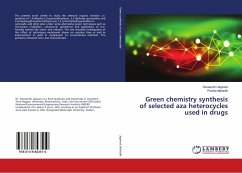Gold nanoparticles are nanoscale particles made of gold atoms. They typically range in size from 1 to 100 nanometers and exhibit unique optical, electronic, and catalytic properties. These properties make them highly valuable and useful in various fields, including medicine, electronics, catalysis, and sensing. Gold nanoparticles have gained significant attention due to their unique properties and potential applications in various fields, including medicine, electronics, catalysis, and sensing. Green synthesis methods offer a sustainable and eco-friendly alternative to traditional chemical synthesis routes, minimizing the use of hazardous chemicals and reducing the environmental impact. In recent years they had been a tremendous transition to green synthesis of the same among which the synthesis using plant extract is mainly adopted. In this study we explore the action of Camellia Sinensis (tea leaves) as a green method to synthesize gold nanoparticles.
Bitte wählen Sie Ihr Anliegen aus.
Rechnungen
Retourenschein anfordern
Bestellstatus
Storno








